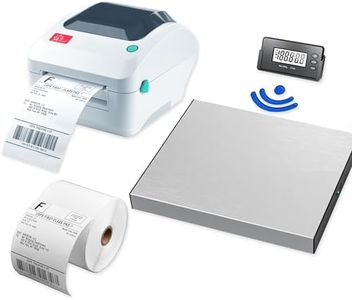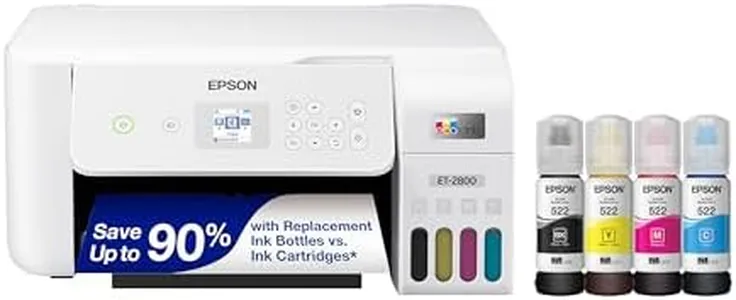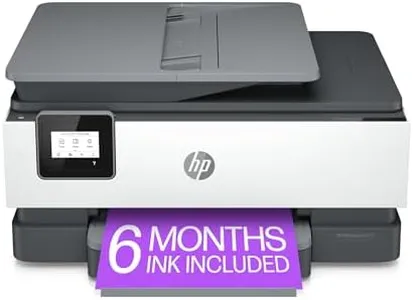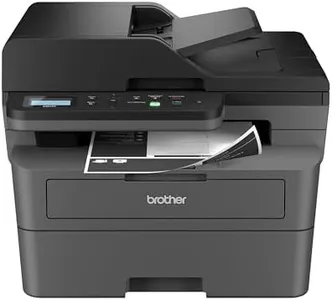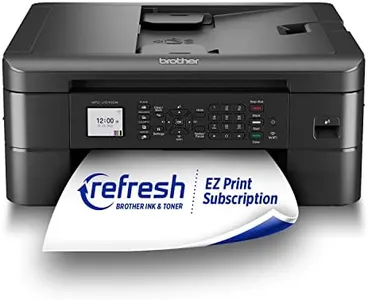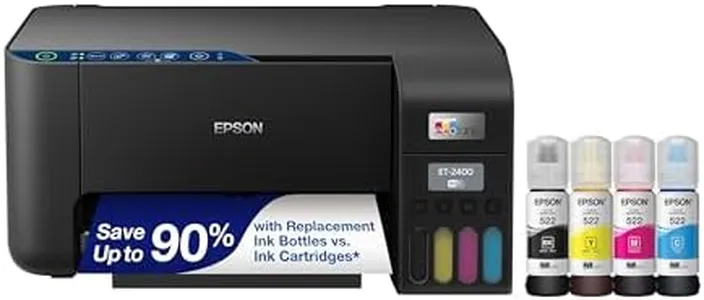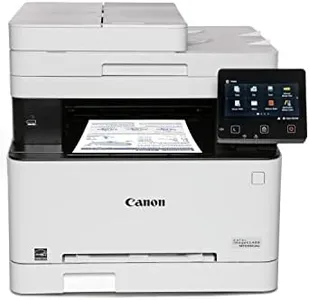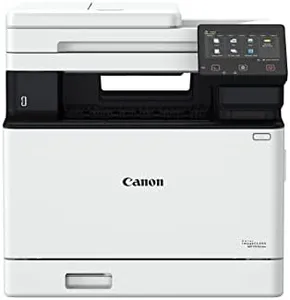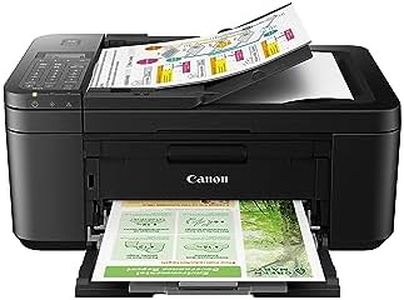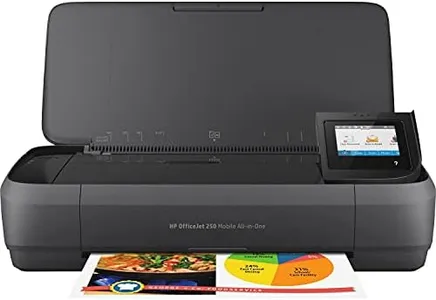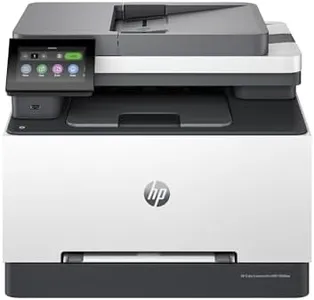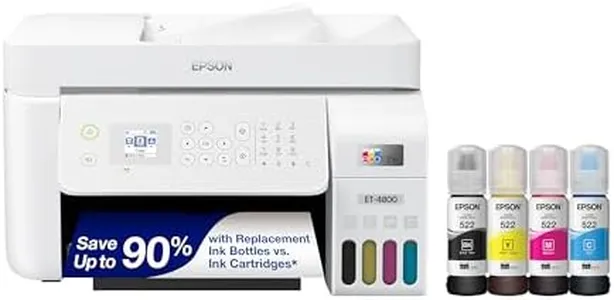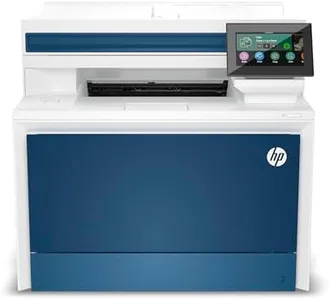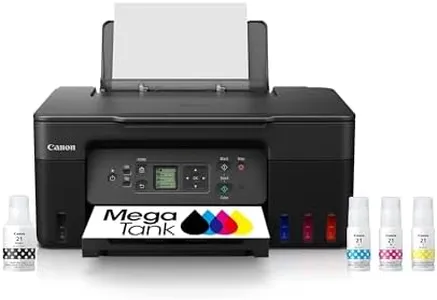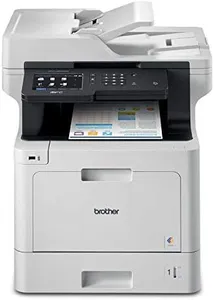10 Best Printer And Scanners 2025 in the United States
Our technology thoroughly searches through the online shopping world, reviewing hundreds of sites. We then process and analyze this information, updating in real-time to bring you the latest top-rated products. This way, you always get the best and most current options available.

Our Top Picks
Winner
Epson EcoTank ET-2800 Wireless Color All-in-One Cartridge-Free Supertank Printer with Scan and Copy – The Ideal Basic Home Printer - White, Medium
Most important from
12435 reviews
The Epson EcoTank ET-2800 is designed to cater to basic home printing needs, offering a convenient all-in-one solution with printing, scanning, and copying capabilities. One of its standout features is the innovative cartridge-free printing system. Instead of traditional ink cartridges, it utilizes refillable ink tanks, leading to significant savings on replacement ink—up to 90% less compared to standard cartridges. Users can print a remarkable number of pages (around 4,500 black and 7,500 color) before needing to refill the tanks, which is perfect for families or home offices that print regularly.
The print quality is impressive thanks to Epson's Micro Piezo technology, producing sharp text and vibrant color images on various paper types. Moreover, with up to two years of ink supplied in the box, users will experience fewer interruptions due to running out of ink.
However, there are some limitations to consider. The print speed is relatively slow for both black and color prints at 10 ppm and 5 ppm, respectively, which may not meet the needs of users requiring high-volume printing. Additionally, duplex printing is manual, meaning users have to flip the pages themselves, which can be a hassle for those who frequently print double-sided documents. The connectivity options include wired and wireless, making it versatile for different setups. The scanner is a flatbed type with decent resolution, but it may not offer the speed and efficiency that a dedicated high-volume scanner would provide. With a modest weight of 8.8 pounds and compact dimensions, it fits well in most home environments.
Most important from
12435 reviews
HP OfficeJet 8015e Wireless Color All-in-One Printer, 6 months of Instant Ink included
Most important from
9993 reviews
The HP OfficeJet 8015e Wireless Color All-in-One Printer is designed for small businesses and home offices, offering a range of features that cater to those needs. One of its key strengths is the inclusion of 6 months of Instant Ink, allowing users to print up to 700 pages a month without worrying about running out of ink. This can result in significant savings on ink costs after the initial period. Plus, the smart features enabled by HP+, such as mobile printing and advanced security options, enhance user experience and convenience.
When it comes to performance, this printer boasts a print speed of up to 18 pages per minute for black and 10 pages per minute for color, which should satisfy most daily printing tasks. The automatic document feeder (ADF) and duplex printing capabilities make it easier to manage multi-page documents efficiently.
In terms of connectivity, the dual-band Wi-Fi ensures a stable connection, and the HP Smart App allows for easy printing, scanning, and copying directly from your smartphone. The design is user-friendly with a touch screen interface, which is great for navigating through functions. The HP OfficeJet 8015e is a solid choice for those looking for a reliable all-in-one printer with robust features for home and small office use, though potential users should consider the limitations regarding cartridge compatibility and the need for internet connectivity for maximum functionality.
Most important from
9993 reviews
Brother DCP-L2640DW Wireless Compact Monochrome Multi-Function Laser Printer with Copy and Scan, Duplex, Mobile, Black & White | Includes Refresh Subscription Trial(1), Amazon Dash Replenishment Ready
Most important from
1321 reviews
The Brother DCP-L2640DW is a versatile monochrome laser printer designed for small businesses. It offers high print resolution and fast printing speeds of up to 36 pages per minute, making it efficient for high-volume document production. The scanner resolution is adequate for standard business needs, and the 50-page automatic document feeder (ADF) enhances productivity by allowing multi-page scanning and copying without manual intervention.
Connectivity options are robust, featuring dual-band wireless, Ethernet, and USB, catering to various business environments and ensuring seamless integration with multiple devices. Additionally, the Brother Mobile Connect App provides convenience for mobile printing and management. A standout feature is the auto-duplex printing, which saves paper and is environmentally friendly. However, being a monochrome printer, it is not suitable for those who need color printing.
The printer uses Brother Genuine toner, with the option of a subscription service to help manage toner replacement and costs efficiently. While it is relatively heavy at 25 pounds, its compact footprint makes it a good fit for small office spaces. The Brother DCP-L2640DW combines high performance, multiple connectivity options, and ease of use, making it an excellent choice for small business operations that require reliable black-and-white document handling.
Most important from
1321 reviews
Buying Guide for the Best Printer And Scanners
Choosing the right printer and scanner can significantly impact your productivity and the quality of your work. Whether you need it for home, office, or professional use, understanding the key specifications will help you make an informed decision. Consider what you will primarily use the device for, such as printing documents, photos, or scanning high-resolution images, and match the specifications to your needs.FAQ
Most Popular Categories Right Now
